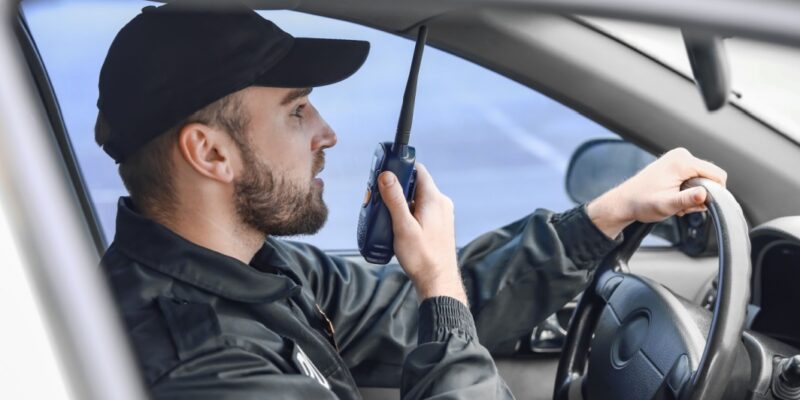Effective fleet management hinges on more than vehicle maintenance and routing efficiency. One of the most critical — yet often overlooked — aspects of logistics operations is communication. In a fast-moving industry where timing, safety, and coordination matter most, smart communication solutions provide a vital link between drivers, dispatchers, and safety teams. For logistics managers, understanding and leveraging the right communication technologies can significantly improve fleet performance, reduce accidents, and ensure regulatory compliance.
The Risks of Poor Communication in Fleet Operations
Without a robust communication system in place, fleet operations are susceptible to costly breakdowns in coordination. Delays, missed deliveries, and inefficient routing are just the beginning. More alarmingly, poor communication increases the likelihood of accidents and injuries. When drivers can’t report incidents in real time, or when dispatchers struggle to relay updates, the entire system is compromised.
In high-pressure environments — such as long-haul freight, delivery logistics, and emergency response — a delay in communication can turn a minor issue into a major crisis. Missed maintenance alerts or equipment issues may go unreported, putting both drivers and cargo at risk. In emergency situations, delays in dispatching assistance or communicating hazards can lead to more severe outcomes. Traffic changes or road hazards that aren’t relayed quickly result in routing inefficiencies. Furthermore, when drivers feel isolated or unsupported due to a lack of real-time communication, it impacts morale, retention, and overall safety culture.
How Two-Way Radios and Wireless Systems Improve Fleet Safety
Modern two-way radio systems are far more advanced than the bulky devices of the past. Today’s solutions offer crystal-clear digital audio, GPS tracking, emergency alerts, and seamless connectivity even in areas with limited or no cellular coverage. These attributes make them essential tools for logistics operations spanning vast geographical areas.
One of the greatest advantages is the ability to communicate instantly. Two-way radios allow drivers to speak to dispatch or other team members with the push of a button, eliminating the need to fumble with phones or wait for calls to connect. This real-time connection is invaluable during emergencies or time-sensitive deliveries. Many systems now include GPS capabilities, giving managers live updates on vehicle location and movements, helping with routing, safety monitoring, and operational oversight. Additionally, features like emergency buttons and man-down alerts offer peace of mind, allowing drivers to signal distress without delay. Radios also support fleet-wide communication, allowing dispatchers to relay important updates to the entire team simultaneously — something that’s not easily achievable with mobile phones.
Integration with Telematics and Fleet Software
Smart communication systems are even more powerful when integrated with telematics platforms and fleet management software. These integrations create a centralized command center where logistics managers can monitor and analyze everything from driver behavior to vehicle diagnostics. The result is a comprehensive, data-driven approach to fleet safety and performance.
Driver behavior data such as speeding, harsh braking, and idling can be flagged and addressed proactively. Maintenance schedules can be automated based on vehicle usage and performance indicators, reducing the likelihood of mechanical failures. Real-time location tracking helps dispatchers adjust routes dynamically in response to traffic or delays, while communication logs provide transparency and accountability for all interactions. The synergy between communication tools and telematics allows for faster decision-making, better resource allocation, and fewer operational blind spots.
Training and Compliance Considerations
Providing your team with advanced communication tools is only part of the equation. Ensuring your drivers and staff are trained to use them correctly is just as crucial. Proper training helps avoid misuse, promotes safety, and ensures compliance with relevant industry regulations.
Training programs should include instruction on how to operate devices, including accessing emergency functions. Drivers should understand proper radio etiquette and how to prioritize communications. It’s also important to review Department of Transportation (DOT) regulations regarding hands-free communication and safe usage while driving. Training empowers drivers to get the most from their equipment while staying compliant and focused on the road. Establishing clear policies around communication usage and conducting regular refreshers ensures that safety protocols are upheld across the entire fleet.
A Smarter Path to Safer Fleets
Fleet safety today is about more than hard hats and vehicle inspections. It’s about building a connected environment where information flows freely, quickly, and reliably. Communication systems that enable instant updates, location tracking, and emergency alerts offer a foundation for operational excellence and risk mitigation. Logistics managers who invest in the right tools — and the training to support them — lay the groundwork for safer roads, more efficient deliveries, and more confident drivers.
If you’re ready to improve your fleet’s communication strategy and build a safer, smarter operation, contact Highland Wireless to learn how our two-way radio and wireless solutions can be tailored to your logistics team’s specific needs.

